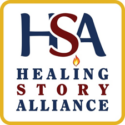by Shelia Darr.
I have a story. Actually only the beginning of a story, so far, but this story could be the mother and grandmother and great-grandmother to hundreds, perhaps thousands of other stories; stories of life changing adventure and healing for college students from the U.S. and for the people of Belize.
Here’s how it started…
A student in one of my Presentational Speaking classes at St. Edward’s University approached me early in the semester; would I direct her in an independent study project involving health communication? Tasha had signed up for a Service Learning experience in Belize during spring break and wanted to do something a little different—tell stories! I enthusiastically agreed to work with her and we got departmental approval for the project.
The following week, we met with Reverend Michael Birnbaum, Executive Director of International Service Learning. This organization provides an opportunity for U.S. college students to earn academic credit for directed volunteer work in Mexico and Central America. We discussed the nature of Tasha’s project and how storytelling could be used effectively to accomplish health education goals.
The projects of International Service Learning in Belize focus primarily on healthcare, so most of the participating students are in pre-med, pre-vet, nursing, etc. They shadow medical personnel and get clinical experience “in the field” as they work in urban and rural health centers and mobile clinics. Belize is the Latin American country most amenable to these medically based service learning projects as English, not Spanish, is the official language.
I made an enthusiastic case for applied storytelling to Reverend Birnbaum. I shared what I knew about Allison Cox’s work with storytelling in health communication and also described the scores of ways that story is being used not just to communicate about health but to facilitate healing—in therapy, counseling, social services, and community building. The good Reverend’s eyes lit up and his imagination caught fire! We arranged another meeting to talk about how storytelling could be incorporated into other service learning projects, which his organization offers in Belize.
At that second meeting, I expected Reverend Birnbaum to talk about using story as a means of enhancing other students’ service learning projects in health communication and education. And he did… for a while. But what had set his imagination on fire was the prospect of creating a whole new program of service learning projects focused not on physical health but on psychological, social, and community health… using story to heal. He asked me to help him develop this new program and to travel to Belize myself to provide onsite student training and supervision when the program is launched (probably next January).
In less than two weeks, my casual comments about storytelling to a public speaking class had led me to the opportunity of a lifetime!
I’m at the stage in my storytelling career of having more interest than opportunity or experience in applied storytelling. At the 1999 National Conference in San Diego, I was one of those who signed the petition to form a Healing Story SIG—but in those days I was just beginning to think of myself as a storyteller. Now, three years later, I have acquired some “head” knowledge, but hardly any “hand” knowledge. My education has been provided by the seasoned voices in the Healing Story Alliance journal and newsletter and on the HealingStory listserv. I know enough to know how much I need to learn!
My queries to the HealingStory and Storytell listservs about this professional opportunity have brought an abundance of encouraging and helpful responses. Allison Cox spent an hour with me on the phone, discussing the use of story in both health communication and healing contexts. Joan Stockbridge and Merle Harris both alerted me to the Parent-Child Mother Goose Program in Canada. Ew Quimbaya-Winship shared some information about how interactive theater is being used in health education. Christopher Maier, Tom McDermott, Mel Davenport, Alia Gee, Karen Chace and others all offered information, suggestions, and advice that have been very valuable.
One of my most important questions was about the contexts in which these students can and cannot work successfully. Although they will never be working with individuals or groups alone—always under the direct supervision of a local professional —it seems obvious that certain contexts would not be appropriate for young and inexperienced HealingStory teller-facilitators who typically have only two weeks to spend on their projects.
As I listened to people’s advice, I realized that service learning projects would work best in contexts of social services, not psychological services. Also, everyone generally agreed that children, youth and the elderly are all populations most likely to be open to—and benefit from—story-related activities led by service learning students.
As I write this article, Reverend Birnbaum is in Belize, proposing this plan to his contacts in government and non-government social service agencies. I’ll find out how it went in a few days, just about the time Tasha takes off to do her spring break project using storytelling in health communication. Soon I’ll know what the next steps in this HealingStory journey will be… but not where they’ll take me!
Belizean Creole folktales often end with a ritual description of the main character taking a walk… “mi di waak eena di bush and ih mi step pahn a pin and if di pin neva ben, di stoay noh mi wahn en”… “he was walking in the bush and he stepped on a pin, and if the pin would never bend, the story would never end.” (From If Di Pin Neva Ben, a collection of Belizean folktales edited by Drs. Timothy Hagerty and Mary Gomez Parham, Cubola Productions: Belize, 2000.)
Right now, I’m watching very carefully where I put my feet… I’m not ready for this story to end!
Article originally appeared in Words on the Wing: Issue 7, Spring 2002
Sheila Darr teaches communication courses at St. Edward’s University in Austin, Texas.
